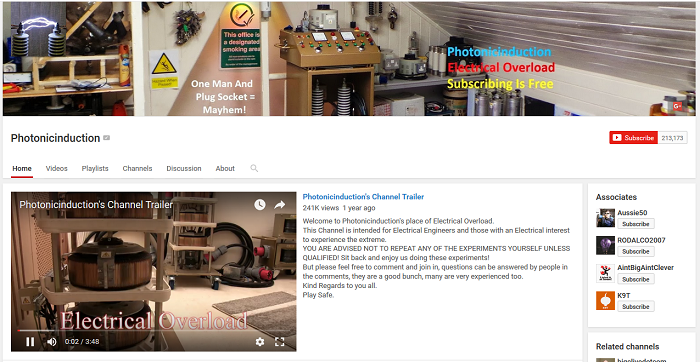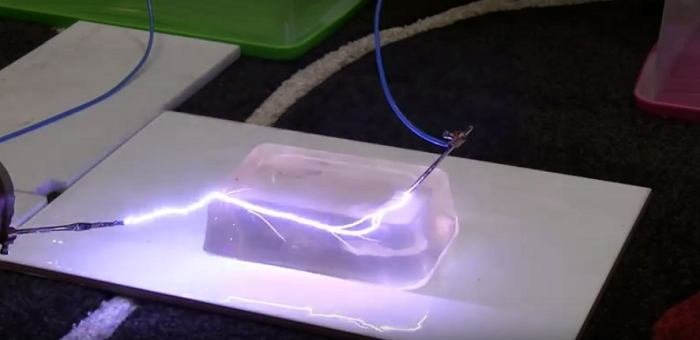You don’t have to cover technology to appreciate YouTube channel ‘Photoinduction’.

The channel describes itself as an ongoing experiment between their resident electricity expert and everyday items that are purposely cranked with maximum power, to the point that they pop.
Electronic Products has covered the channel in the past – in one instance, they overloaded a toaster whilst cooking some bread, and in another, a CD was erased using 240,000 volts of electricity.
This time, the Photoinduction team used ballistic gel, the material made famous by the folks on Mythbusters, who often used it to demonstrate impact on human muscle and tissue. In terms of electricity, it has approximately the same resistance as human flesh.
A few tests at the beginning of the video demonstrate the resistance of the gel – at 12 volts, an LED bulb can be lit through the gel, albeit a bit dimmer due to the resistance; however, it’s not enough current flow to light an incandescent bulb. So, the current needs was increased to overcome the resistance.
What was discovered is the gel began melting at 166 volts. At a little over 200 volts, though, the bulb began to light up, and the gel warmed up some. The bulb finally blew out at 515 volts.
Post light bulb experimentations, low voltage effects on the gel were demonstrated at 440 volts. They are pictured below:

Medium voltage was demonstrated at 2000 volts and pictured below. Quick damage was done to the gel with a big chunk being taken out and a good deal of electrical discharge.

At top voltage, the system started out at 30,000 volts (a police issued stun gun), before being ran up to 100,000 volts. It was at this point that the gel showed tremendous discharge, and began to glow purple:

But why use words to describe the experiment when you can check out the video for yourself, below:
To see more fun experiments with electricity, head to the Photoinduction YouTube channel.
Advertisement
Learn more about Electronic Products Magazine





